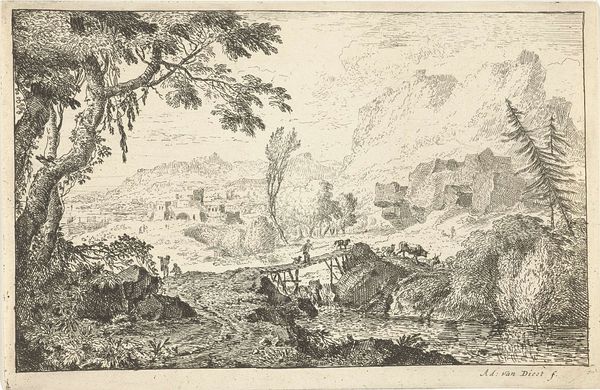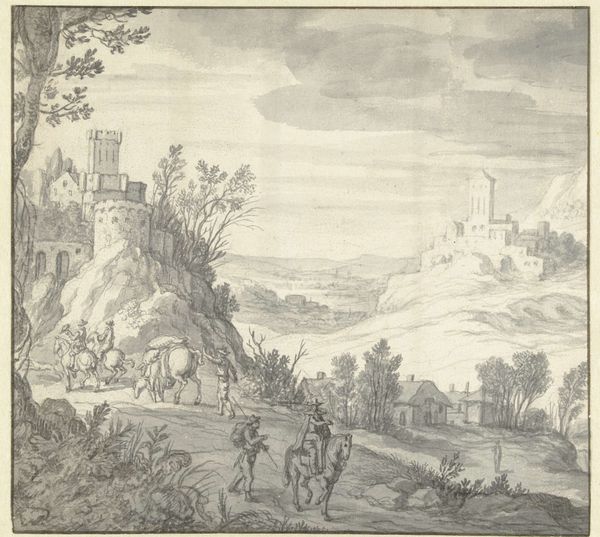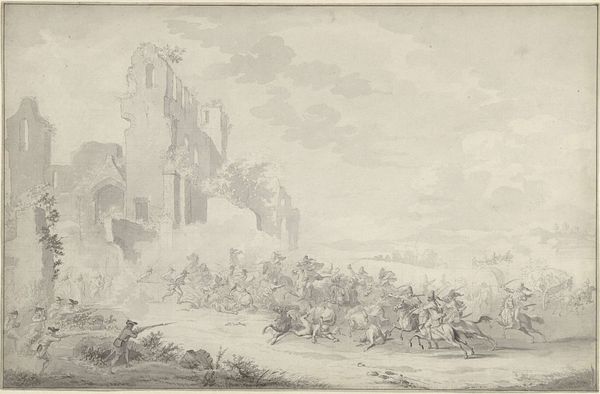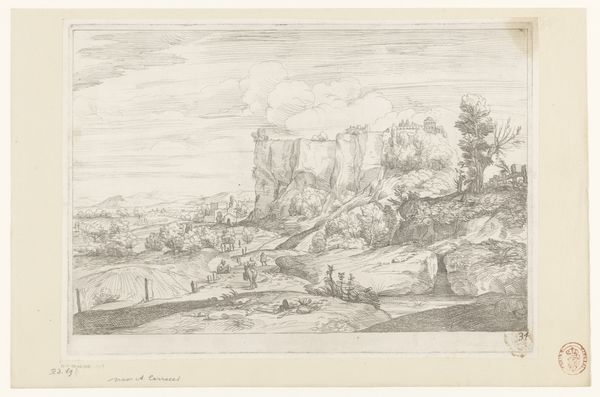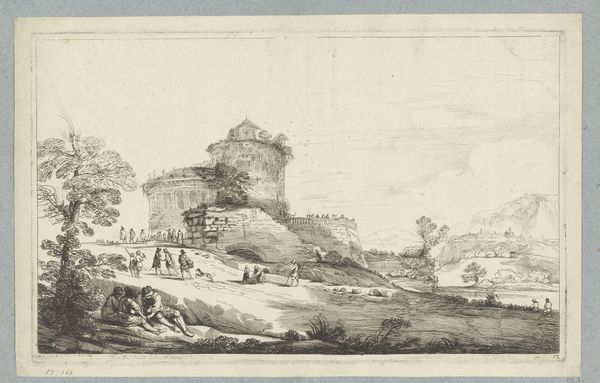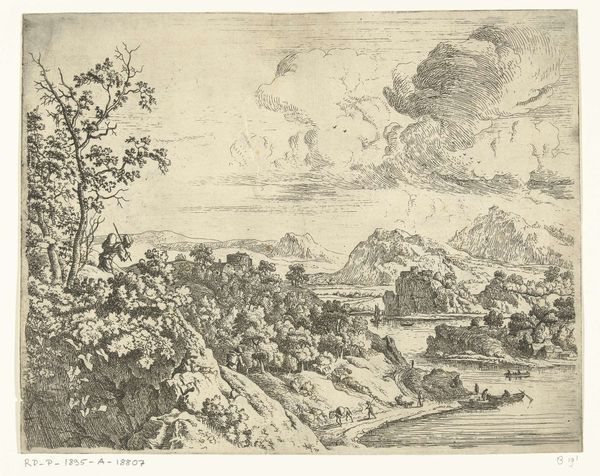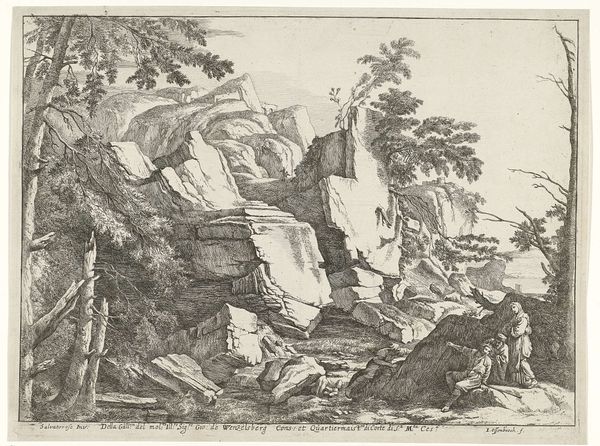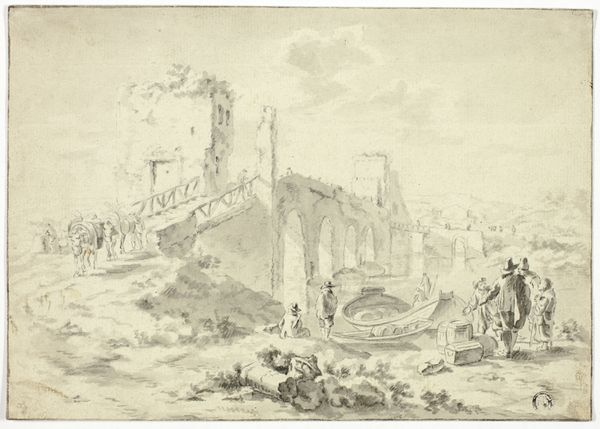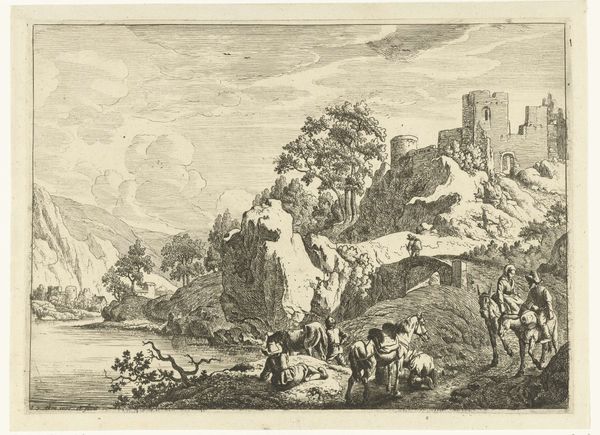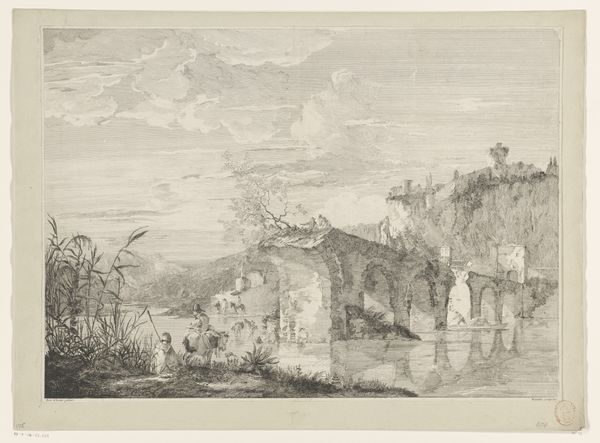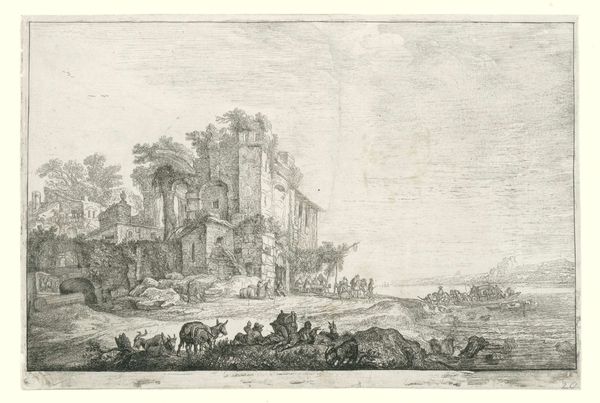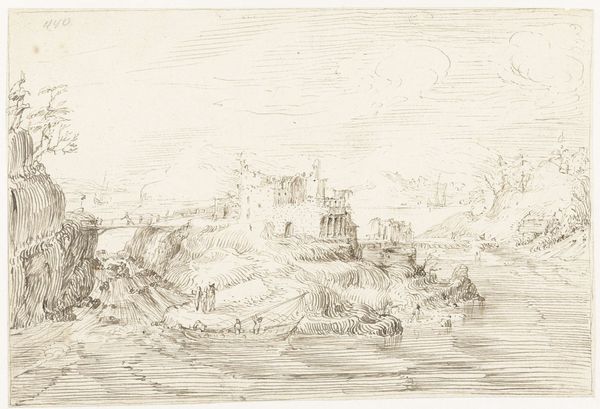
Gezicht op het Valkhof te Nijmegen en de doorgebroken sluizen bij de Ooischendijk, 1784 1784 - 1814
0:00
0:00
hendrikhoogers
Rijksmuseum
drawing, paper, ink, pencil
#
drawing
#
pen sketch
#
pencil sketch
#
landscape
#
paper
#
ink
#
pen-ink sketch
#
pencil
#
pen work
#
sketchbook drawing
#
cityscape
#
realism
Dimensions: height 264 mm, width 404 mm
Copyright: Rijks Museum: Open Domain
Curator: Let's examine "Gezicht op het Valkhof te Nijmegen en de doorgebroken sluizen bij de Ooischendijk, 1784," a drawing created between 1784 and 1814 and attributed to Hendrik Hoogers. Editor: The initial impression is one of quiet devastation. The muted tones achieved with ink, pencil and pen on paper lends an air of somber reflection despite being a landscape scene. Curator: Indeed. Hoogers’ work allows us to consider the physical reality of environmental disasters and their effects on people and the built environment. The shattered sluices are central to the work. What labor and material would have been necessary to repair them? Editor: Absolutely. We must consider the class dynamics involved in responding to the devastation. The broken dike symbolizes more than physical damage; it points to social vulnerabilities laid bare. Were certain communities disproportionately affected, and what support was offered to them in rebuilding? Curator: And the choice to render this scene using readily available materials – paper, pencil, ink – emphasizes its accessibility, placing it outside the more exclusive realm of oil painting, thus potentially allowing for wider dissemination and perhaps even political engagement. Editor: I think it's an important reminder that even seemingly straightforward landscape drawings are inherently political. Who gets to depict this landscape? What are their motivations and perspectives? And who is included or excluded from the narrative being constructed? The gaze is powerful here. Curator: Exactly. Studying the types of ink and paper available in the region at that time could even tell us more about Hoogers' social status and access to resources, giving further context. Editor: The attention to such a seemingly mundane disaster opens a crucial space to discuss how water management reflects political and economic structures—highlighting how landscapes embody both environmental and social injustices. Curator: Exploring this cityscape through a materialist lens certainly allows us to trace how social factors shape artistic production, bringing it away from only aesthetic considerations. Editor: Viewing it through an activist lens makes visible those marginalized histories and connects to a dialogue that reflects historical inequities which sadly still have resonance today.
Comments
No comments
Be the first to comment and join the conversation on the ultimate creative platform.
